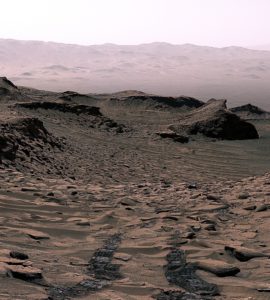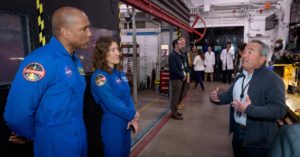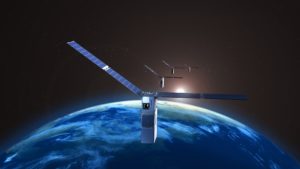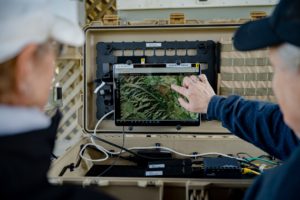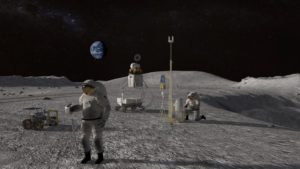Technology Law
NASA engineers began using a network of ground sensors in March to collect data from an experimental air taxi to evaluate how to safely integrate such vehicles into airspace above cities – in all kinds of weather. Researchers will use the campaign to help improve tools to assist with collision avoidance and landing operations and…
Continue readingNew findings from NASA’s Curiosity Mars rover could provide an answer to the mystery of what happened to the planet’s ancient atmosphere and how Mars has evolved over time. Researchers have long believed that Mars once had a thick, carbon dioxide-rich atmosphere and liquid water on the planet’s surface. That carbon dioxide and water should…
Continue readingAdvancements in NASA’s airborne technology have made it possible to gather localized wind data and assess its impacts on smoke and fire behavior. This information could improve wildland fire decision making and enable operational agencies to better allocate firefighters and resources. A small team from NASA’s Armstrong Flight Research Center in Edwards, California, is demonstrating…
Continue readingFrom agriculture and law enforcement to entertainment and disaster response, industries are increasingly turning to drones for help, but the growing volume of these aircraft will require trusted safety management systems to maintain safe operations. NASA is testing a new software system to create an improved warning system – one that can predict hazards to drones before…
Continue readingAs NASA prepares to send astronauts to the Moon aboard the Orion spacecraft, research, testing, and development at NASA’s Ames Research Center in California’s Silicon Valley has played a critical role. Recently, Ames welcomed Artemis II astronauts Christina Koch and Victor Glover and Orion leaders Debbie Korth, deputy program manager, and Luis Saucedo, deputy crew…
Continue readingAs missions to low Earth orbit become more frequent, space traffic coordination remains a key element to efficiently operating in space. Different satellite operators using autonomous systems need to operate together and manage increasing workloads. NASA’s Starling spacecraft swarm recently tested a coordination with SpaceX’s Starlink constellation, demonstrating a potential solution to enhance space traffic…
Continue readingNASA researchers conducted initial validation of a new airspace management system designed to enable crews to use aircraft to fight and monitor wildland fires 24 hours a day, even during low-visibility conditions. From March 17-28, NASA’s Advanced Capabilities for Emergency Response Operations (ACERO) project stationed researchers at multiple strategic locations across the foothills of the…
Continue readingImagine your car is in conversation with other traffic and road signals as you travel. Those conversations help your car anticipate actions you can’t see: the sudden slowing of a truck as it begins to turn ahead of you, or an obscured traffic signal turning red. Meanwhile, this system has plotted a course that will…
Continue readingNASA and the U.S. Geological Survey (USGS) welcomed a community of government, industry, and international partners to explore current technology needs around natural resources – both on Earth and “off world.” During a workshop held in February at NASA’s Ames Research Center in California’s Silicon Valley, participants discussed technologies that will improve the ability to…
Continue readingNASA will conduct a live flight test of aircraft performing simulated wildland fire response operations using a newly developed airspace management system at 9 a.m. PDT on Tuesday, March 25, in Salinas, California. NASA’s new portable airspace management system, part of the agency’s Advanced Capabilities for Emergency Response Operations (ACERO) project, aims to significantly expand…
Continue reading

